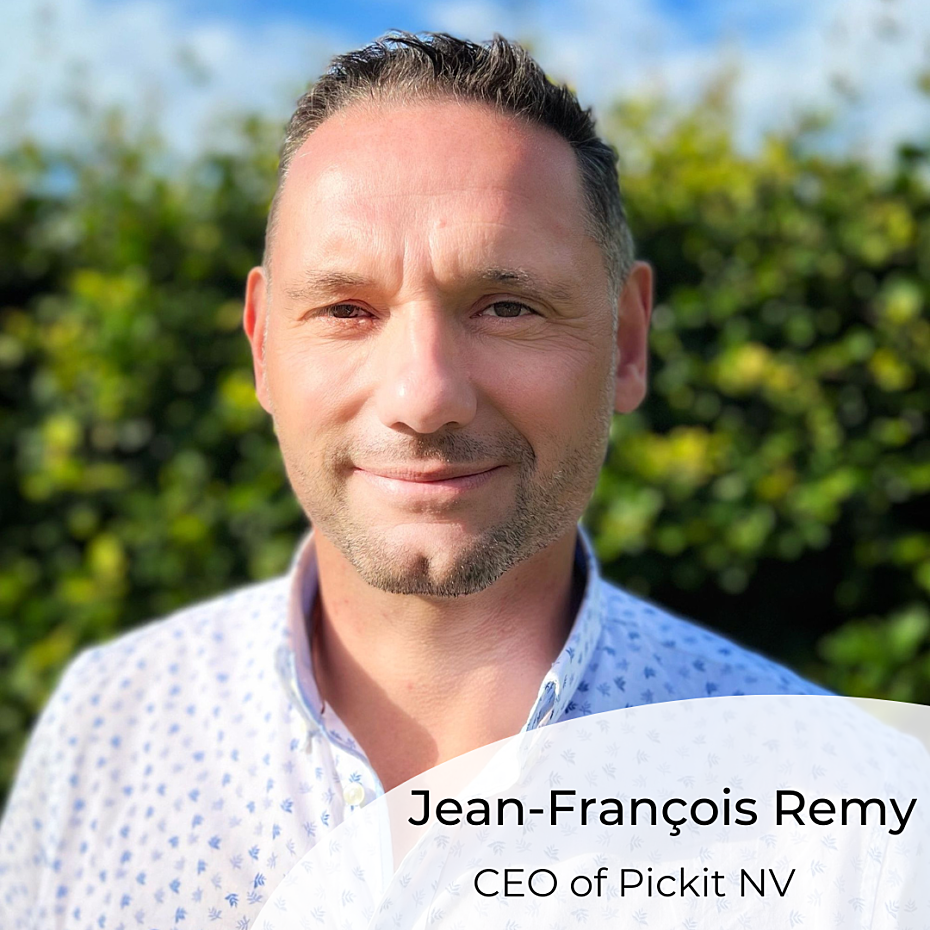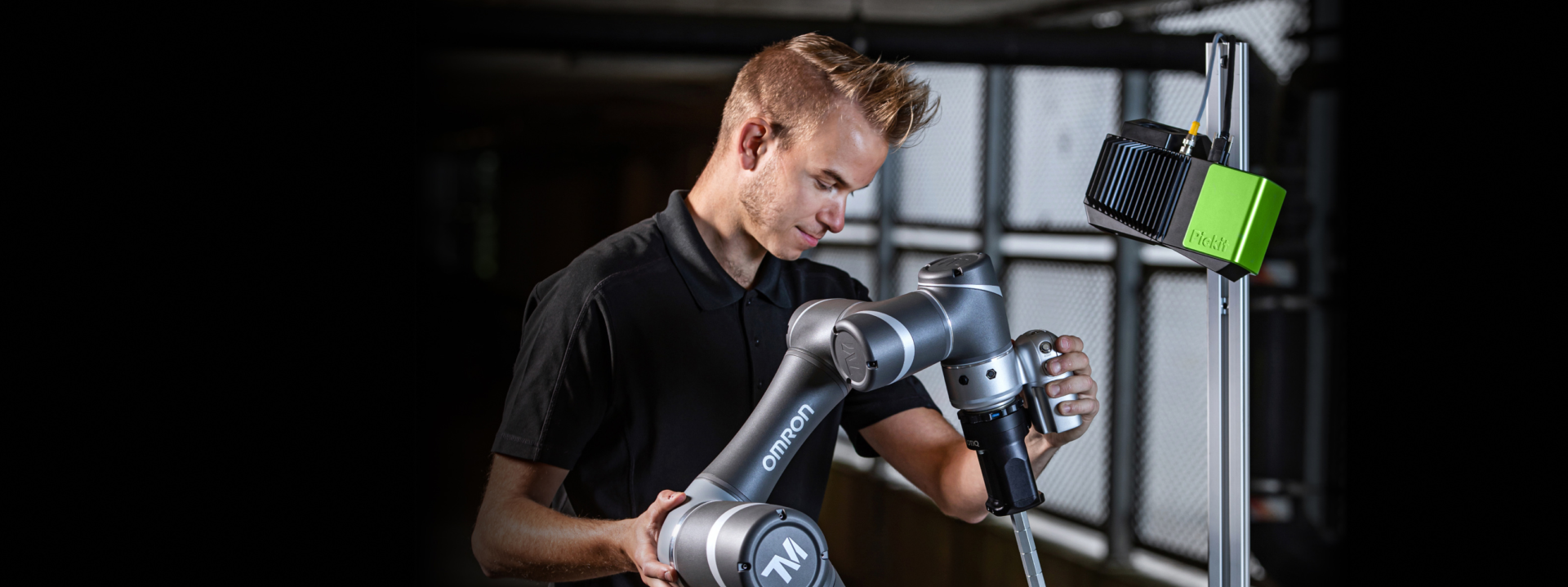Pickit Increases Manufacturing Process Efficiency and Flexibility with 3D Vision
by Lee Dong-jae, Hello T
In the era of the Fourth Industrial Revolution, artificial intelligence and robotic technology are rapidly advancing, leading to increasingly faster development of automation technology across various industries. 3D robot vision technology, which is at the core of factory automation, plays a crucial role in enabling robots to recognize objects in the workspace, as well as calculate their position and orientation.
3D robot vision emerged to overcome the limitations of 2D vision technology and is one of the technologies that allow robots to visually perceive and analyze their environment. It helps robots recognize the size, shape, position, and orientation of objects in a three-dimensional space and utilize this information to perform tasks. Robots can perceive the workspace like humans through visual sensors, allowing them to perform tasks accurately and quickly.
3D robot vision technology is essential for robots performing tasks like bin-picking. Pickit is a company that develops 3D robot vision technology. It provides solutions for automating robotic technology across various industries, from the automotive industry to home appliance manufacturers, and has recently been gaining attention in the industrial sector for its achievements and technical prowess.
We met with Pickit CEO Jean-Francois Remy.

Pickit's technology
Jean-François Remy:“Bin picking is a task that involves sequentially picking and placing objects from a randomly stacked pile of items to a designated location. Pickit utilizes 3D robot vision to enable robots to perform bin picking tasks more quickly, flexibly, and accurately. Pickit's solution can replace labor-intensive and time-consuming tasks, such as product sorting in factories. By minimizing the use of mechanical devices like sorters, it can save space and eliminate the risk burden associated with the task.
If robots can perform complex tasks more precisely and efficiently, safety and reliability are increased. Pickit's robot guidance allows for accurately determining the task position based on the critical parts of the relative object, even if the workpiece is not in a fixed state or the 3D vision's Field of View (FOV) is insufficient. Robot guidance is an application module of Pickit that helps overcome hardware limitations through various applications.
Pickit provides solutions for application scenarios related to bin picking, depalletizing, assembly, polishing and sanding, welding (metalworking, pipe, etc.), and inspection. For example, in the automotive industry, it offers solutions that enable robots to recognize specific car parts and move accordingly, provide precise paths for perfect welding, inspect components, and detect issues.”
I'm curious about the process of workers programming the process using Pickit's 3D vision platform
Jean-François Remy: “Pickit has a very simple web-based user interface, and it offers free technical guides on its website. Workers can implement the robotic automation system without an internet connection or programming, thanks to the intuitive interface. Connecting the system to the robot only requires an Ethernet port connection. The user interface can be adapted to various automation scenarios.”
What is the technology that Pickit has invested the most in for solution development?
Jean-François Remy: "Pickit focuses on application modules that can be used across various industries. Pickit's modules provide optimized UI for each automation scenario, allowing users to learn and utilize them easily. The hardware lineup is also being developed to suit various scenarios.
Client companies receive customized modules optimized for their desired robotic automation through Pickit. This allows them to easily access and utilize 3D vision solutions for automation, which were difficult to apply through coding. As a result, they can save costs and reduce the payback period of their investments."
If there is the biggest value that Pickit's solution provides to customers, what would it be?
Jean-François Remy: "Pickit has global companies like Hyundai Motor, LG, Toyota, and GKN as clients. Pickit's solution offers very fast return on investment due to its ease of use and implementation. However, the even greater value we provide to customers is flexibility. The market and customer demands are changing at a very rapid pace nowadays. Companies need to maintain and adjust their production processes. By using Pickit's 3D solution, processes can be flexibly and efficiently adjusted, and new products can be designed quickly without the intervention of service technicians or engineers. When a company needs a new application, Pickit's solution can quickly scale the technology, and Pickit refers to this as a strategic partnership with client companies in jointly developing the future of 3D robot vision."
What is the biggest challenge in 3D vision technology?
Jean-François Remy: "The biggest challenge for Pickit is to make sure as many customers as possible experience Pickit's solution. Hardware technology has already been largely leveled up in the market. However, there are limitations in implementing actual automation solutions using 3D-based data and learning software capabilities. Pickit provides interfaces and application features that can be used by non-experts without learning to code. Pickit believes its task is to prove the value of solutions utilizing 3D data."
What is the industry where 3D vision technology is most commonly used? Among the industries where Pickit's solution is applied, which one do you think has the greatest growth potential?
Jean-François Remy: "Currently, we see the automotive industry as the biggest opportunity to create high value for our customers. Pickit is collaborating with the world's leading automotive manufacturers and tier suppliers through applications such as robot guidance.
Pickit's solutions are being adopted in various industries like casting, consumer goods and electronics, pharmaceuticals and chemicals, and logistics. There are even home appliance manufacturers using Pickit's solution to produce 40 different refrigerator models on a single production line."
How do you predict the development direction of the 3D vision industry in the next few years?
Jean-François Remy: "We believe that the vision solution market is just beginning. Many industries are still facing labor shortage issues. 3D vision technology can not only perform burdensome and hazardous tasks in place of human workers but also improve the overall efficiency and flexibility of the manufacturing process. Production and logistics processes will continue to evolve to meet customer demands.
More applications will be automated using 3D robot vision. Automation of tasks like fruit harvesting, depalletizing, and wheel replacement in automotive maintenance will become a reality. Pickit will revolutionize time and cost by quickly solving difficult 3D vision engineering challenges in robotic automation.
Pickit Korea is expected to record continuous growth. Pickit considers the Korean market as an important hub for its future role as the bridgehead of the Asian market, and is not sparing any support, including hiring new employees. This year, a new training center in collaboration with partner companies is also planned to open."
This article first appeared on HelloT. The original Korean version can be found here.
